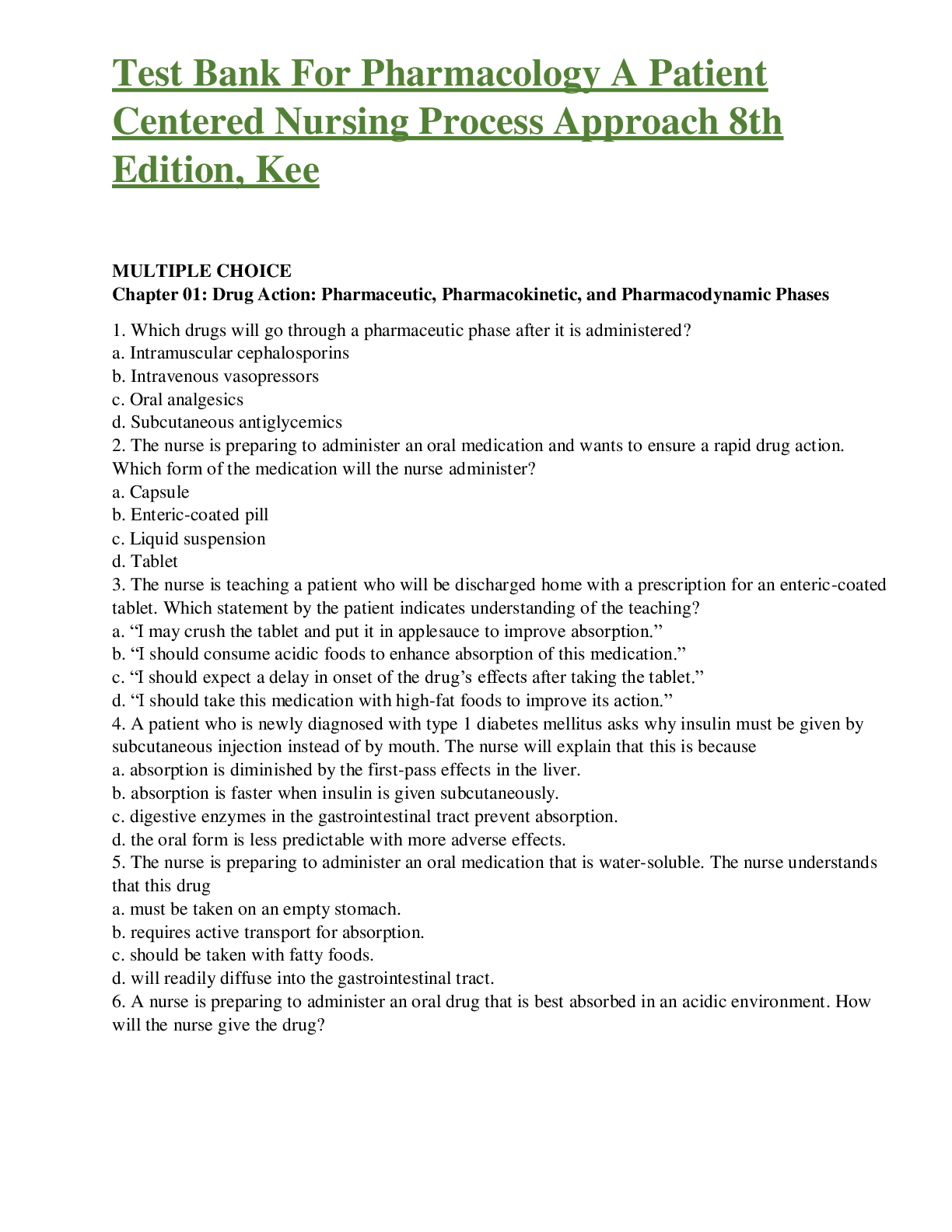Test Bank For Pharmacology A Patient Centered Nursing Process Approach 8th Edition, Kee
Course
Project Management
Subject
Chemistry
Category
Questions Only
Pages
28
Uploaded By
ATIPROS
Preview 5 out of 28 Pages


Download all 28 pages for $ 9.50
Reviews (0)
$9.50
